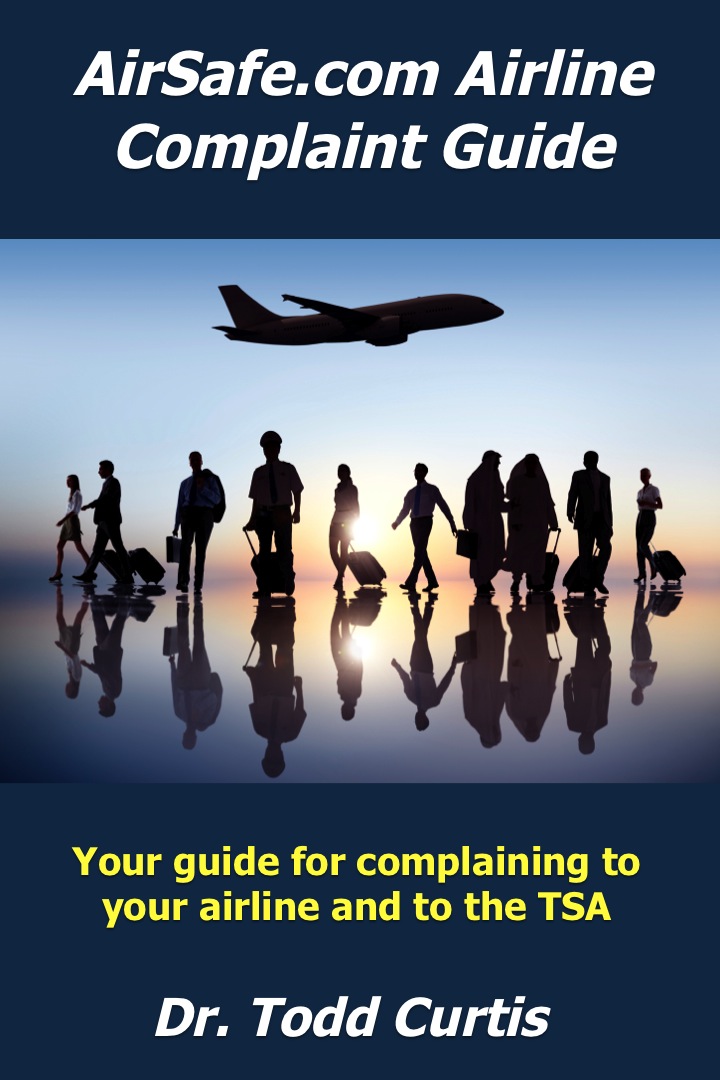This 17th annual review discusses seven fatal airline crashes and three other significant events from 2012. The seven fatal airline crashes from 2012 equals 2008 as the year with the fewest fatal passenger events since AirSafe.com was launched in 1996. All but one of these seven events, a fatal crash last week in Canada that killed one passenger, occurred outside of North America and western Europe.
In addition to the seven airline crashes, there were five other significant crashes that did not kill an airline passenger, though four of these events involved airliners, and all five involved at least one fatality.
Among the 12 events from 2012, some of the more noteworthy included the following:
- The death of a lap child in a crash were all other passengers and crew survived
- A foiled hijacking attempt in China
- A crashed that killed the entertainer Jenni Rivera.
- Five crashes with no survivors
Crashes Killing Airline Passengers
2 April 2012; UTair ATR 72-200; VP-BYZ;flight 120; Tyumen, Russia: The aircraft was on scheduled domestic flight from Tyumen to Surgut, Russia. The airplane crashed broke up, and caught fire in a field about 1.5 miles (2.5 km) form the end of the departure runway. All four crew members and 27 of the 39 passengers were killed. This is the second fatal passenger jet crash involving this airline. The first was a 17 March 2007 crash of a UTair Tupolev Tu134A in Samara, Russia that killed six passengers.
Fatal crashes of airlines of Russia and the former Soviet Union20 April 2012; Bhoja Airlines; 737-200; AP-BKC; flight B4 213; Islamabad, Pakistan: The aircraft was on a scheduled domestic flight Karachi to Islamabad, Pakistan, and crashed in a residential area near the airport. The aircraft was completely destroyed in the crash, and all six crew members and 121 passengers were killed. Among those killed were several children and one newlywed couple. This was the airline's inaugural flight on this route.
This was the 72nd time that passengers have been killed on a 737 airline flight, and the first since an August 2011 crash in Canada.
Fatal 737 crashes
Crash rates by model14 May 2012; Agni Air; Dornier 228-200; 9N-AIG; near Marpha, Nepal: The aircraft was on a scheduled domestic flight from Pokhara to Jomson, Nepal, and crashed into the side of a mountain near Marpha, Nepal. Shortly before the crash, the crew had turned back toward Pokhara because of weather conditions at Jomson. Two of the three crew members and 13 of the 18 passengers were killed.
3 June 2012; Dana Air; MD83; 5N-RAM; flight 992; Lagos, Nigeria: The aircraft was on a scheduled domestic flight Abuja to Lagos, Nigeria, and crashed in a residential area near the airport. The plane reportedly struck a power line and then crashed into at least one apartment building. The aircraft was completely destroyed in the crash, and all seven crew members and 146 passengers were killed. At least 10 people on the ground were killed as well.
Fatal MD80 series crashes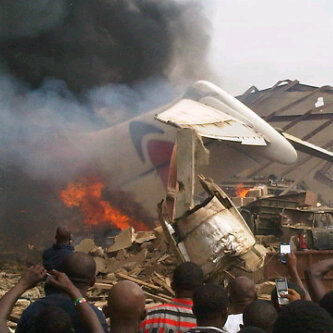
28 September 2012; Sita Air Dornier 228;-200; 9N-AHA; Flight 601; Kathmandu, Nepal: The aircraft was on a scheduled domestic flight from Kathmandu to Lukla, Nepal, and crashed shortly after takeoff. The aircraft reportedly struck a vulture about 50 feet off the ground. The bird hit the right engine, and the plane crashed while the crew was attempting to returen to the airport. All three crew members and 16 passengers were killed.
Fatal Dornier crashes22 December 2012; Kivalliq Air Fairchild Metro 3; C-GFWX; Flight 671; Sanikiluaq, Canada: The aircraft was on a scheduled domestic flight from Winnipeg to Sanikiluaq, Canada, and crashed just short of the runway during a second landing attempt. There was limited visibility due to darkness and blowing snow at the time of the crash. Both crew members survived, but one of the seven passengers, a six-month-old boy being held in his mother's lap, was killed.

25 December 2012; Air Bagan Fokker 100; XY-AGC; Flight 011; Heho, Myanmar: The aircraft was on a scheduled domestic flight from Mandalay to Heho, Myanmar, hit a set of power lines during a landing attempt, and crashed about a kilometer short of the runway. There was fog in the vicinity of the airport at the time of the crash. The aircraft broke up and there was a post-crash fire. All six crew members survived, but one of the 65 passengers was killed. A person on the ground was also killed.
Fatal Fokker 100 crashes
Aviation Herald article on crash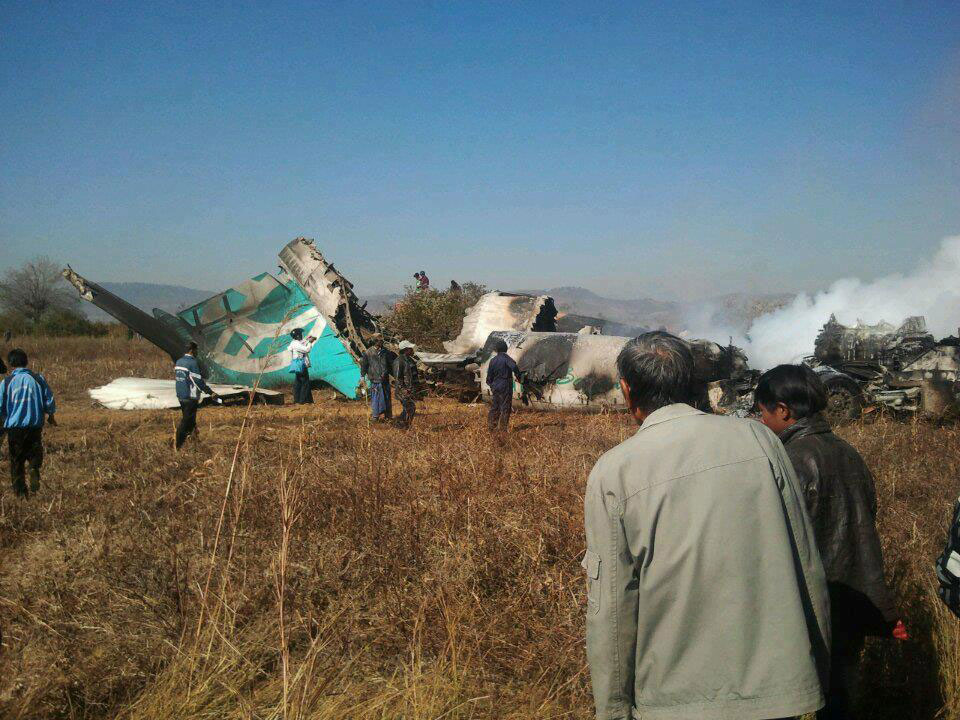
Other Significant Events
9 May 2012; Sukhoi Superjet 100; near Jakarta, Indonesia: The aircraft was on an unscheduled demonstration flight that had departed from Jakarta, Indonesia. After departure, the crew circled nearby Mt. Salak, and began a descent from 10,000 feet to 6,000. The aircraft crashed into the side of the mountain at about 5,100 feet. There were no survivors. Among the 37 passengers were members of the media and representatives from a number of Indonesian airlines.
This aircraft type had entered commercial airline service the previous month, and the manufacturer Sukhoi had been taking the accident aircraft on a promotional tour through a number of countries in Asia. This was a demonstration flight that had invited guests as passengers, rather than a flight that was available to the public, so it is not counted as a fatal event as defined by AirSafe.com
2 June 2012; Allied Air; 727-200; 5N-BJN; flight 111; Accra, Ghana: The aircraft was on a cargo flight from Lagos, Nigeria, to Accra, Ghana, and overran the runway after landing. The aircraft struck a minivan on a nearby road, killing all 10 of the occupants. None of the four crew members were killed.
Because no airline passengers were killed, this is not counted as a fatal event as defined by AirSafe.com.
Fatal 727 crashes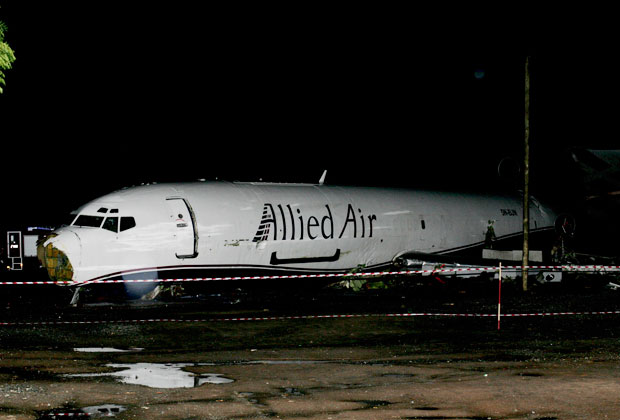
29 June 2012; Tianjin Airlines; Embraer ERJ 190; B-3171; flight 7554; en route Hotan to Urumqi, China: The aircraft was on a scheduled domestic flight from Hotan to Urumqi, China, when three hijackers attempted to take over the aircraft. The hijackers reportedly carried explosives and attempted to break into the cockpit. The hijackers were subdued by passengers and crew members, and the aircraft returned to Hotan. Two of the three hijackers later died of injuries received during a fight with the crew and passengers. None of the the nine crew members or the 89 passengers were killed. Because only hijackers were killed, this crash was not counted as a fatal event as defined by AirSafe.com.
9 December 2012; Starwood Management; Learjet 25; N345MC; near Iturbide, Mexico: A chartered private jet carrying the singer and entertainer Jenni Rivera crashed near Iturbide, Mexico while en route on a domestic flight from Monterrey, Mexico to the Toluca, Mexico airport near Mexico City. Both pilots and all five passengers, including Rivera, were killed in the crash. The Learjet was cruising at about 28,000 feet and entered into a high speed descent, crashing in mountainous terrain. Because this was not an aircraft normally used in passenger airline service, this crash was not counted as a fatal event as defined by AirSafe.com.
29 December 2012; Red Wings Airlines; Tupolev 204-100; RA-64047; flight 9268; Moscow, Russia: The aircraft was on an unscheduled repositioning flight from Pardubice, Czech Republic to Moscow, Russia. After touching down, the aircraft overran the runway, and collided with an embankment next to a highway, causing the aircraft to break up. While various pieces of aircraft wreckage struck cars on the adjacent highway, no one on the ground was killed (See video below).
Five of the eight crew members were killed. It had been snowing prior to the crash, and there was a significant crosswind at the time of the landing. Because there were no passengers on the aircraft, this crash was not counted as a fatal event as defined by AirSafe.com.
Plane crashes in Russia and the former Soviet Union
Fatal and serious events by year
1996, 1997, 1998, 1999, 2000, 2001
2002,2003, 2004, 2005, 2006, 2007
2008, 2009, 2010, 2011, 2012
AirSafe.com Bonuses
All subscribers to the AirSafe.com mailing list at subscribe.airsafe.com will be able to download free copies of all of the recent AirSafe.com books, including the latest, AirSafe.com Family Air Travel Guide.
Also available is the AirSafe.com Fear of Flying Resource Guide, with an overview of the symptoms of fear of flying, as well as recommended resources for managing or eliminating these fears.




 Calvin Curtis, father of AirSafe.com creator Dr. Todd Curtis, will be presented with a Congressional Gold Medal, which is the highest civilian honor bestowed by the US Congress for distinguished achievement.
Calvin Curtis, father of AirSafe.com creator Dr. Todd Curtis, will be presented with a Congressional Gold Medal, which is the highest civilian honor bestowed by the US Congress for distinguished achievement.
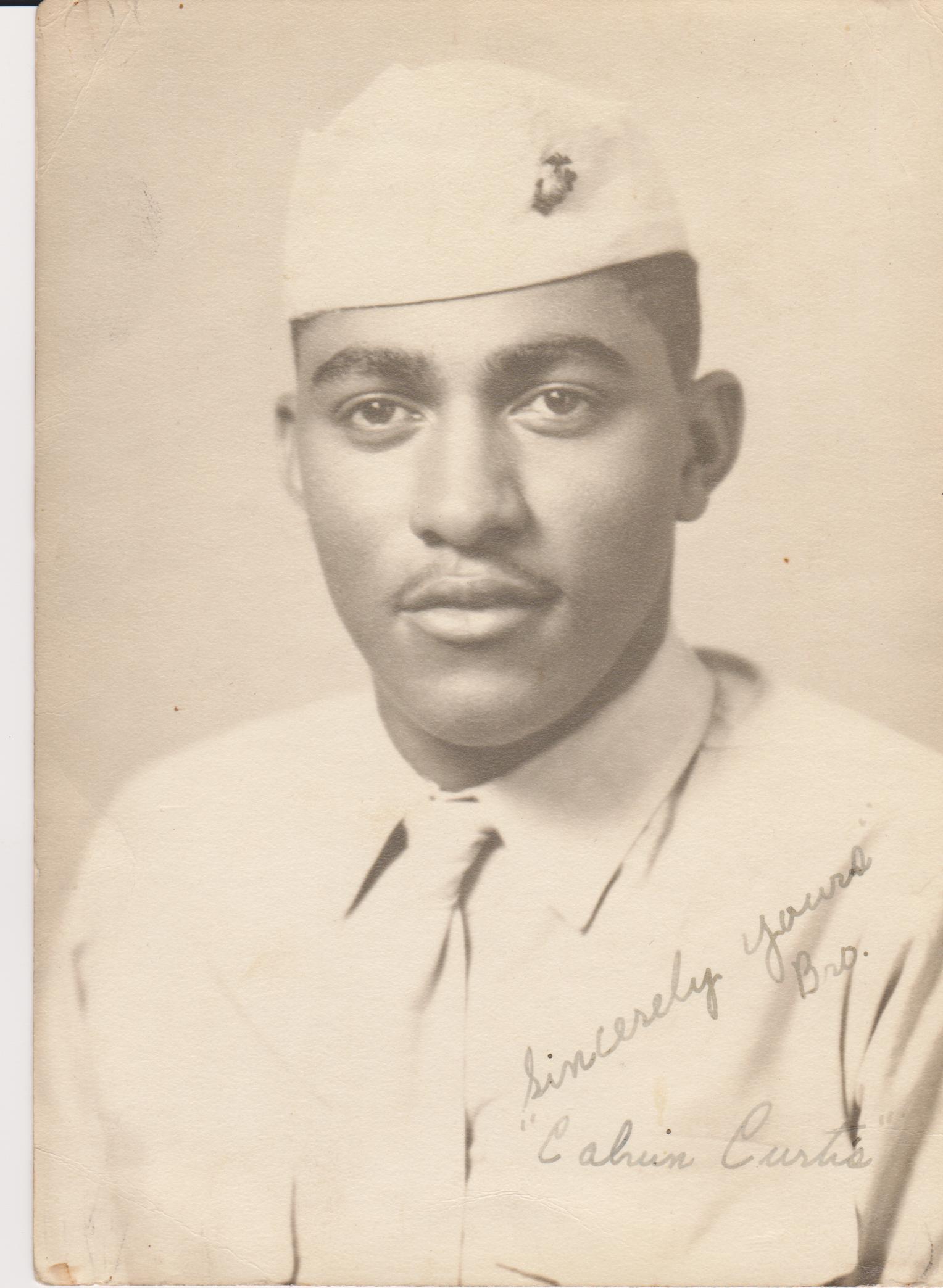 The ceremony for Calvin Curtis will be held at 11 am on December 11, 2012, at the Naval Operational Support Center, located at Ft. Sam Houston in San Antonio, Texas. The public is invited to attend, and AirSafe.com encourages anyone in the San Antonio area to do so. The links below provide directions to the event, as well as details about the ceremony.
The ceremony for Calvin Curtis will be held at 11 am on December 11, 2012, at the Naval Operational Support Center, located at Ft. Sam Houston in San Antonio, Texas. The public is invited to attend, and AirSafe.com encourages anyone in the San Antonio area to do so. The links below provide directions to the event, as well as details about the ceremony.

